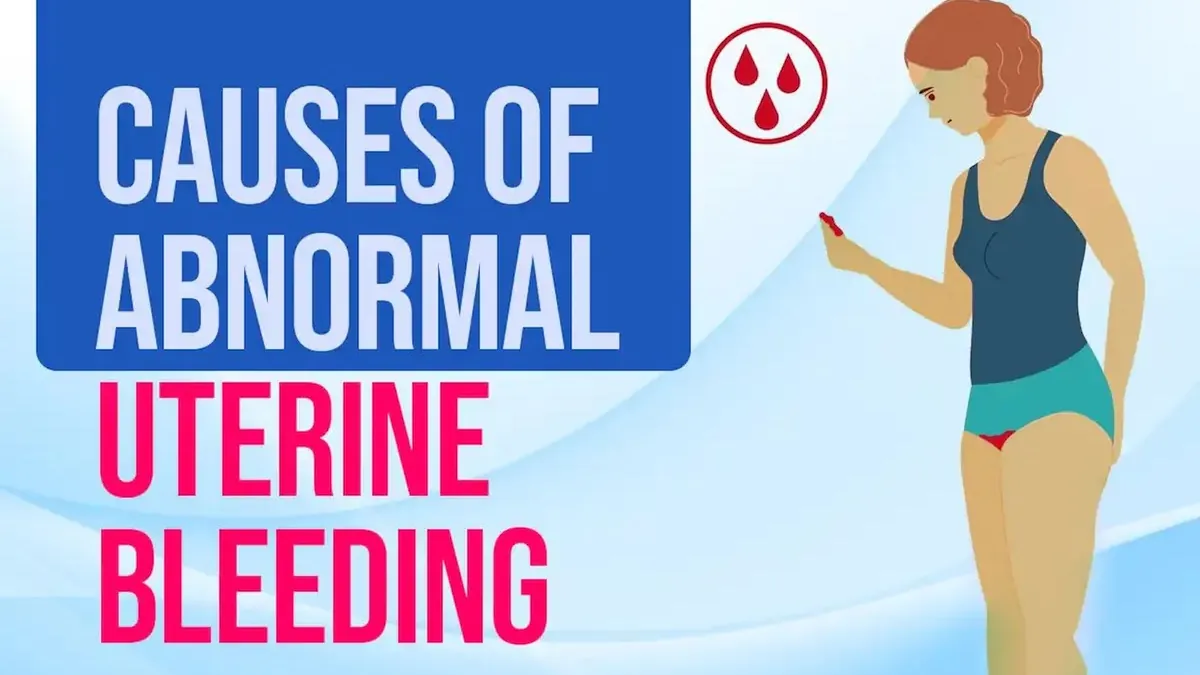Abnormal uterine bleeding is a severe problem for some women. The irregular menstruation is often the major symptom of AUB cases. Frequent and heavy bleeding can lead to anemia and further effect quality of life. Signs that your periods are too heavy include: having to change a pad or tampon every 1 or 2 hours because it is completely soaked with blood or passing large lumps of blood, called clots.
The AUB is a more common disease in gynecology among women over 40 years of age. When the women gets older, especially at perimenopausal stage, after 45 years of age, irregular menstruation is very frequent. The irregular pattern can be delay of menstruation and following heavy bleeding. During perimenopausal stage one of your ovaries may not release an egg during one or more months. In this case next time you have your period you will end up bleeding heavily. Unpredictable or heavy vaginal bleeding due to irregular ovulation (egg release) is called dysfunctional uterine bleeding.
Most AUB cases are admitted to gynecology clinics with frequent and heavy bleeding.
Aub
Heavy bleeding causes anemia and many health problems in long term. Therefore, heavy and abnormal bleeding has to be diagnosed for cause and needs to be treated. Frequent and heavy bleeding needs differential diagnosis. Numerous problems can underlie AUB. Endometrial polyps are frequent causes of AUB. Fibroids, especially FIGO type 0,1 and 2 fibroids, are another reason for AUB. Adenomyosis is also a cause of heavy bleeding in women over 40 years of age. Other pathologies that may lead to AUB include endometrium cancer, blood clotting disorders and hormonal dysfunction.
Endometrium
Endometrium is the inner layer of the uterus. Disorders of endometrium are called endometrial pathologies. Transvaginal ultrasound (TV-US) is the first step for diagnosis of endometrial pathologies. Endometrial thickness can be measured using TV-US. Saline infusion sonohysterography (SIS), another method used for diagnosis of AUB, uses a small amount of saline (salt solution) inserted into the uterus that allows the lining of the uterus (endometrium) to be clearly seen on an ultrasound scan. Endometrial biopsy is performed to exclude cancer. Among the endometrial pathologies cancer is the most important one.
If the endometrial biopsy indicates cancer, the patient has to be surgically staged and treated. Endometrial hyperplasia also has to be excluded. Endometrial hyperplasia is overgrowth of the lining of the uterus,called endometrium , which can be a precursor to uterine cancer. Especially in case of a thick endometrium on TV-US, despite not being the sole reasons for thick endometrium, cancer and hyperplasia must be excluded. Endometrial biopsy can also reveal other endometrial pathologies.
Endometrial
The treatment of AUB ranges from medical treatment to surgery. If there is no pathology like fibroids or polyps, then medical treatment can be first line treatment option. Fibroids are either removed by hysteroscopy or laparoscopy. Endometrial polyps can be removed by hysteroscopy. Levonorgestrel releasing intra-uterine device can be another option for treatment of AUB. When all the medical options fail in AUB treatment, last alternative is hysterectomy. Hysterectomy is a major surgery that removes the uterus.
Another option prior to hysterectomy is ablation. Endometrial ablation is a treatment that destroys or removes most of the lining of the uterus. This can reduce heavy menstrual bleeding or stop menstrual bleeding altogether. It is not a good option if you might want to get pregnant in the future and may not be appropriate if your abnormal bleeding is caused by anovulation. The cause of the bleeding should be identified before endometrial ablation is performed.
Polyps
Polyps, are small, grape-like growths of the lining (cavity) of the uterus originating from the endometrium. Endometrial polyps can be removed by hysteroscopy. Hysteroscopy is a procedure that allows your doctor to look inside your uterus in order to diagnose and treat the cause of abnormal bleeding. Hysteroscopy is done using a hysteroscope, a thin, lighted tube that is inserted into the vagina to examine the cervix and inside of the uterus.
Fibroids
The uterus is made of muscle, and fibroids grow from this muscle layer of the uterus. Uterine fibroids can bulge from the inside or outside of the uterus. If a fibroid does not bulge from the uterus and lay within the muscle layer of the uterus, it’s called intramural fibroid, if it bulges outside of the uterus it’s called subserosal fibroid. Fibroids are not cancerous and are not thought to be able to become cancerous. However, it can sometimes be difficult to determine if a mass in the uterus is a common fibroid or a rare cancerous tumor. Fibroids are also called uterine leiomyomas or myomas.
Leiomyomas of uterus are very common. Approximately 80 percent of females will have fibroids in their lifetime. However everyone diagnosed with fibroids does not have bothersome symptoms. Treatments are available for fibroid-related problems like heavy menstrual bleeding, pain or pressure in the pelvis, or problems with pregnancy or infertility. In the presence of fibroids your uterus may get enlarged or have an irregular shape. A pelvic or transvaginal ultrasound can confirm the presence of uterine myomas and measure your endometrial thickness.
If your fibroids are not causing bothersome symptoms, you can choose not to have treatment. If you do have symptoms, your options include medication or surgical treatment. The best treatment depends on which symptom is most bothersome to you. The size, number, and locations of fibroids, as well as whether or not you might want to get pregnant in the future, also affect treatment decisions. Most medications aim to reduce the heavy menstrual bleeding that is common in people with fibroids. A few also shrink the fibroid, and some are focused on reducing pain or correcting anemia. When there is no benefit from medical treatmet surgical treatments are required.
